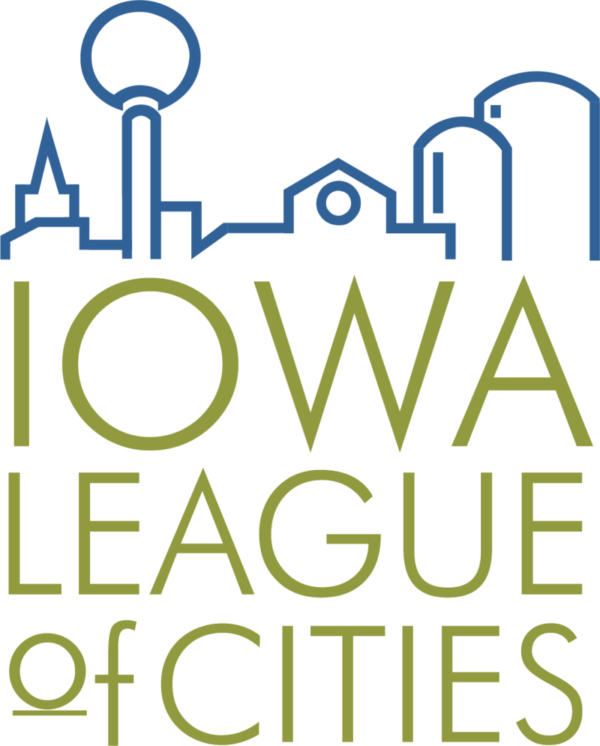SF 356 has now been changed and renumbered as SF 569. This language can still be changed significantly. The below webpage is for advocacy and education purposes only.
SF 569 Bill Summary and Analysis
The Iowa Senate Ways & Means Committee amended and refiled their property tax proposal as SF 569. Generally, the proposal creates a link between taxable valuations and levy rates so that when taxable valuations go up, levy rates adjust down via an inflationary adjustment based on where your levy rate is. New construction and revaluation growth are not excluded from the limitation formula, meaning they can trigger a reduced levy rate for the subsequent year.
In addition to a new levy limitation which is outlined in great detail below, SF 569 also alters many other local government revenues including General Corporate Purpose bonding limitations, Homestead and Military Service Tax Credits, regional transit authorities, impacts revitalization agreements, and requires a “truth in taxation” notice by mail to each individual property owner, by parcel.
In brief overview, several levies are aggregated into a new Combined General Fund Levy (CGFL) and then adjusted based on valuation growth. Each year, if a city’s taxable valuation grows by more than either the 2.5% or 3.25% threshold (depending upon whether its current CGFL is above, at, or below $8.10), it follows a formula (see below) to adjust its CGFL for the subsequent budget year.
SF 569 includes an increase of 30% for General Corporate Purpose bonding limits based on population-based thresholds. Prior iterations included a reduction. These thresholds and limits can be found in 384.24A (4). This bill adds new reporting requirements to the Annual Financial Report. This bill also limits the city’s ability to appeal to the State Appeal Board for suspension of levy limitations for certain reasons for natural disaster purposes only.
We have developed a city-by-city analysis of how this legislation would impact your city if it were implemented starting with FY 2017. To view your city’s budget impacts, visit the SF 569 Analysis web page which contains a yearly breakdown of the CGFL levy rate and derived revenue based on the previous year’s valuations. Because the League will continue to develop visual aids based on this data, we encourage you to check this webpage and look in Legislative Link routinely. Alternatively, the below step-by-step instructions are how you can perform this math by hand. It has been updated to include changes made and reflected in SF569, such as instances where the 2.5% and 3.25% growth limitation levels are implemented.
Deriving your Combined General Fund Levy
Section 21, which starts on page 14, line 3, combines the current regular general fund $8.10 levy with several existing levies to create a combined general fund levy (CGFL), then deletes those levies. These deleted levies are found in 384.12 subsections 1-20, 24.48, and 384.8. However, 384.12 subsections 10, 14, 17, and 19 are untouched. The city will annually calculate a new CGFL.
Note, however, that debt service, trust and agency, municipal transit, aviation authority, tort liability and referendum-authorized temporary increased levies are outside the above-described cap.
If the current year’s CGFL is above $8.10, the city is limited to up to 3.25% non-TIF taxable value growth annually before being subject to a levy limitation each year. Once at or below $8.10 for the CGFL, a city may not exceed $8.10 for future budget years. This was changed from 2.5% previously.
If the CGFL is at or below $8.10, the city is limited to up to 2.5% non-TIF taxable value growth annually before being subject to a levy limitation each year. This was changed from 3.25% previously.
Calculating the New Combined General Fund Levy (CGFL)
Below are the steps of how the League thinks that the levy limitation process might be estimated: (subject to changes – we will keep our webpage updated):
Note: an amendment moves the effective date to create the baseline CGFL year to FY 25, making the first annual CGFL adjustment year FY 26. However, for estimation purposes, we use FY 23 as a baseline as a proxy to estimate the impact this proposal would have had for FY 24. In practice, this limitation process repeats each year, beginning with the FY 26 budget. Also, note that the assessment process generally applies every other year for most properties. For that reason, growth rates might vary year-to-year.
1. Find your city’s non-TIF taxable value including gas & electric on which property taxes are calculated for fiscal year 2023 (FY 23). This is the amount on line 2a of your FY 23 budget certification page (which can be found here: https://dom-localgov.iowa.gov/budget-view-renderer?id=11067). This is a slight change and removes only ag land and ag building taxable value from the equation.
2. Identify your non-TIF taxable value including gas & electric on which property taxes are calculated for the next budget year (FY 24), and calculate growth compared to FY 23 (step #1 above). This is the amount you would enter on line 2a of your FY 24 budget certification page. To do this, divide FY 24 non-TIF taxable growth by FY 23 non-TIF taxable growth.
Note: subsequent to the passage of SF181, cities will receive revised valuation information from their county office by mid-March 2023.
3. Calculate your baseline general fund levy (CGFL).
To do this, go to your city’s budget certification page (page 1 of your FY 23 budget). The budget archives can be found: https://dom-localgov.iowa.gov/budget-search.
From there, combine (sum) all of the levy rates for the levies being merged. In addition to your existing regular general fund levy (up to $8.10), these are Section 384.12 subsections 1, 2, 3, 4, 5, 6, 7, 8, 9, 11, 12, 13, 15, 16, 18 and 20; the emergency levy (Section 384.8); and any amount levied under Section 24.48 (appeal) for FY 23.
4. Based on the result of steps #2 and #3, follow the applicable option:
- If your city’s CGFL from step #3 is less than $8.10 AND your non-TIF taxable value growth from step #2 is greater than 1.025, multiply your step #1 result by 1.025. Continue to step #5.
- If your city’s CGFL from step #3 is greater than $8.10 AND your non-TIF taxable value growth from step #2 is greater than 1.0325, multiply your step #1 result by 1.0325. Continue to step #5.
- If your city’s CGFL from step #3 is less than $8.10 AND your non-TIF taxable value growth from step #2 is less than 1.025, stop. $8.10 is your maximum CGFL for FY 24.
- If your city’s CGFL from step #3 is greater than $8.10 and your non-TIF taxable value growth from step #2 is less than 1.035, stop. You may use your calculated FY 23 CGFL as a maximum CGFL for FY 24.
5. Sum the ‘property taxes certified’ (with utility replacement request) that are generated by the levies you combined in step #3. These are found on your budget certification pages on the same lines as the combined levies.
6. Calculate the following:
1,000 * (amount from step #5 / amount from step #4)
This is your new maximum CGFL for FY 24.
Other Legislation
Note: other legislative proposals involving changes to the property tax system are being considered or enacted. Below are a few of the proposals already released, including SF 181, which was signed into law on February 20.






